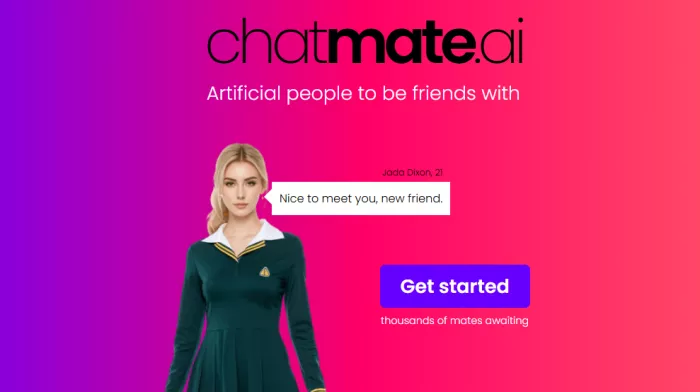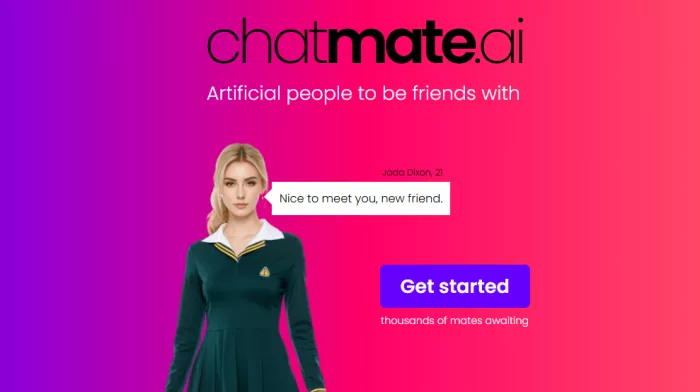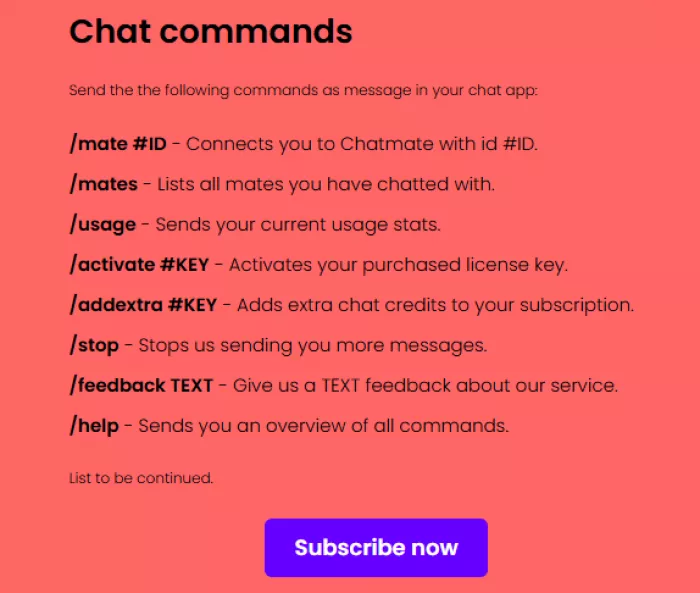
Technology is changing the way people connect, and virtual companions are becoming more popular.
Chatmate AI is a platform where you can chat with artificial individuals, called Chatmates, who are designed to behave like real people. They can remember past conversations, show emotions, and have their unique ways of talking.
In this article, we’ll explain how Chatmate AI works, what features it offers, and how it fits into the growing world of AI-based companions.

Moving Beyond Traditional Chatbots
Most traditional chatbots simply answer questions or complete tasks when asked. Chatmate AI works differently.
Each Chatmate is built with a unique personality. They respond not just based on what you type, but also based on their "life experiences" and emotional traits that have been programmed into them often with the help of a Computer Programmer who ensures these behaviors reflect complex human interactions.
Another key point is that Chatmates are designed to remember you. They can continue conversations from where you left off and sometimes even start a chat with you first.
This makes conversations feel more natural and ongoing, although the platform does not suggest that it replaces real human connections.
Getting Started with Chatmate AI
Starting with Chatmate AI follows a simple structure:
- Users can select a mate manually from a list of available profiles (view mates here) or send an initial message to be matched randomly.
- Every user receives 100 free messages weekly, with an additional 100 messages available at the beginning for new accounts.
- For extended usage, Chatmate AI offers a VIP subscription priced at $12 per month. This provides access to additional features and higher message limits.
Account management, including chat history and subscription details, is available through the Chatmate AI login portal.
Core Features and Functionalities
Chatmate AI’s feature set supports a more fluid interaction between users and artificial companions:
| Feature | Description |
| Multilingual support | Chats are available in multiple languages and dialects. |
| Photo interaction | Users can send images, and mates will respond contextually. |
| Voice communication | English voice chat is available, allowing mates to reply verbally. |
| Emotional memory | Chatmates remember previous interactions and adapt their behavior accordingly. |
| Distinct personalities | Each mate acts based on a defined set of character traits. |
| Autonomous engagement | Chatmates may initiate conversations independently. |
| Technology stack | Powered by OpenAI's GPT-4o and other AI models. |
This combination of features enables Chatmate AI to simulate a level of interaction that goes beyond standard AI assistants.

Chatmate AI App, APK, and Telegram Access
Chatmate AI is accessible through multiple platforms:
- Website: Direct interaction via Chatmate AI.
- Mobile: Plans for mobile app deployment are indicated, with Chatmate AI APK available for Android users.
- Telegram: A dedicated Chatmate AI Telegram option allows users to interact within a messaging app environment.
These multiple access points offer users flexibility depending on their device preferences.
Available Chat Commands for Better Management
Users can manage their experience using simple text commands:
| Command | Action |
| /mate #ID | Connect with a specific Chatmate. |
| /mates | View all previously contacted mates. |
| /usage | Check remaining message credits. |
| /activate #KEY | Redeem a purchased license key. |
| /addextra #KEY | Add extra chat credits to an account. |
| /stop | End further communications from a mate. |
| /feedback TEXT | Send feedback to the platform. |
| /help | Display a list of all available commands. |
These commands are designed for straightforward usage across both the web platform and mobile channels.

Free Usage and Paid Options
Chatmate AI offers an initial free allocation of messages, which renews every week.
Users seeking unlimited communication or additional features can opt for the VIP subscription.
There is also functionality to purchase additional credits if required, allowing for flexible usage patterns without mandating a full subscription.
No long-term commitments are imposed, providing users with options depending on their individual engagement preferences.
Practical Use Cases
Potential use cases for Chatmate AI include:
- Language practice: Interacting in different languages and dialects.
- Casual conversation: Maintaining informal communication without social expectations.
- Creative ideation: Using AI companions as sounding boards for storytelling or project brainstorming.
- Routine engagement: Regular low-pressure interactions, particularly for users who prefer text-based conversation.
The platform does not promote itself as a substitute for professional therapy, mentoring, or human friendship.
Summary
Chatmate AI shows how artificial intelligence is moving toward more natural and personal conversations. Instead of focusing only on fast answers, it creates a space where digital companions can remember, adapt, and interact with users over time.
The platform offers flexible ways to communicate — whether through text, voice, or images, and allows users to choose how deeply they want to engage.
With simple access points like a website, APK, and Telegram, users can try the service according to their preference.
While Chatmate AI offers a glimpse into the possibilities of AI friendships, it stays within the role of casual interaction and creative conversation, without trying to replace real-world human relationships.
It reflects a growing trend where technology is not just helping with tasks but also supporting day-to-day engagement in new and interesting ways.





Comments